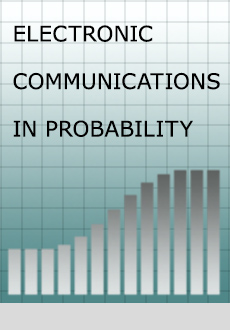Abstract
We prove the sharpness of the percolation phase transition for a class of Cox percolation models, i.e., models of continuum percolation in a random environment. The key requirements are that the environment has a finite range of dependence, satisfies a local boundedness condition and can be constructed from a discrete iid random field, however the FKG inequality need not hold. The proof combines the OSSS inequality with a coarse-graining construction that allows us to compare different notions of influence.
Funding Statement
CH would like to acknowledge the financial support of the CogniGron research center and the Ubbo Emmius Funds (Univ. of Groningen). BJ was supported by the German Research Foundation under Germany’s Excellence Strategy MATH+: The Berlin Mathematics Research Center, EXC-2046/1 project ID: 390685689, and the Leibniz Association within the Leibniz Junior Research Group on Probabilistic Methods for Dynamic Communication Networks as part of the Leibniz Competition. SM was supported by the Australian Research Council (ARC) Discovery Early Career Researcher Award DE200101467.
Acknowledgments
We thank the anonymous referee for the thorough reading of the manuscript. The remarks and suggestions helped to improve the quality of the material substantially.
Citation
Christian Hirsch. Benedikt Jahnel. Stephen Muirhead. "Sharp phase transition for Cox percolation." Electron. Commun. Probab. 27 1 - 13, 2022. https://doi.org/10.1214/22-ECP487
Information





